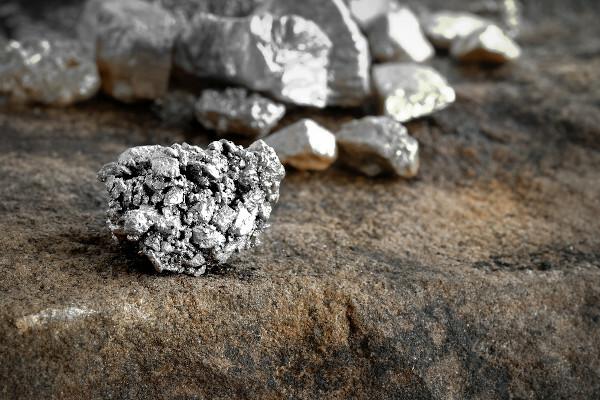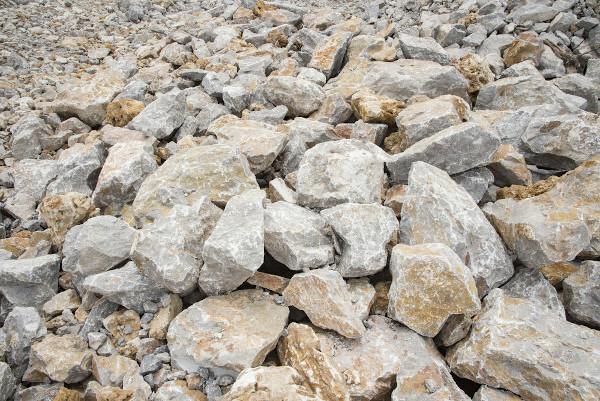Mineral resources are minerals or rocks found in nature that have economic value. They can be found both on the Earth's surface and in the subsurface, originating through the endogenous and exogenous processes that form and transform rocks.
Mineral resources are important for the industry, since they are used as raw materials, and also for international trade, being sold on the foreign market as a commodity. Despite this, its exploitation can cause damage to the environment, such as soil degradation, pollution and deforestation.
Read too: Environmental impacts caused by mining
Topics of this article
- 1 - Summary of mineral resources
- 2 - What are mineral resources?
-
3 - What are the mineral resources?
- → Metallic minerals
- → Non-metallic minerals
- 4 - How are mineral resources distributed in nature?
- 5 - Mineral resources in the world
- 6 - Mineral resources in Brazil
- 7 - What is the importance of mineral resources?
- 8 - Mineral resources and environmental problems
- 9 - Resolved exercises on mineral resources
Summary on mineral resources
Mineral resources are minerals and rocks found in nature that have economic value.
They are classified into metallic, non-metallic and energetic.
Metallic resources are those that present characteristics such as electrical and heat conductivity. Examples are iron, aluminum and gold.
Non-metallic resources are the others, that is, those that do not have the typical properties of metallic elements. Examples are limestone, basalt and salts.
Energy resources are not necessarily solid minerals. However, they are classified as mineral resources due to their formation process and because they are found in nature, such as natural gas and oil.
Mineral resources are found in crystalline shields and sedimentary basins.
Its origin is associated with the processes of formation and transformation of rocks.
They are unevenly distributed across planet Earth. Among the largest ore producers are Russia, China, Australia, the United States and Brazil.
Brazil stands out in the production of iron ore, aluminum, manganese and niobium.
Mineral resources are important to national economies and to global economic dynamics, serving as raw material for the industry and being traded as commodities in the market International.
Despite this, its unrestricted exploitation can cause environmental problems, such as soil degradation, pollution, deforestation and even serious environmental accidents.
Do not stop now... There's more after the publicity ;)
What are mineral resources?
Mineral resources are minerals or rocks found in nature that have economic potential, that is, they can be mined for profit directly or indirectly. In the second case, we are referring to its important application in industry. Mineral resources can also be called ores.
The activity that consists of removing mineral resources from their place of origin for economic purposes is called extractivism mineral, which is inserted in the primary sector of the economy.
What are mineral resources?
Known and cataloged mineral resources are divided into two types, following the general classification of minerals: metallic and non-metallic.
→ metallic minerals

Metallic minerals are those elements characterized by aspects such as ductility, conductivity of heat and electricity, in addition to its appearance being marked by a typical glow of this type of mineral, which makes it possible to identify them easily. Examples of metallic mineral resources are:
iron;
bauxite (aluminum);
gold;
silver;
copper;
manganese;
nickel;
lead;
tin;
cobalt;
chrome;
zinc;
lithium;
uranium.
→ non-metallic minerals

Non-metallic minerals are those elements that have no metallic properties, like the ones mentioned above. Despite this, they may have small amounts of metal in their composition. Non-metallic mineral resources They are widely used in construction and industrial production. in fuels It is fertilizers, for example. Non-metallic mineral resources are:
limestone;
basalt;
sulfur;
clay;
sand;
phosphates;
nitrates;
granite;
quartz;
sea salt;
potassium;
marble;
gravel;
titanium;
gneiss.
Observation: There are also elements that are included in the category of mineral resources, although they do not have the same chemical and physical properties as metallic and non-metallic minerals. It is these resources to water, O Petroleum and the mineral coal. They are classified as mineral resources because they are extracted from nature and used for economic purposes. In the case of mineral coal, oil and natural gas, they can also be classified as energy mineral resources, since they are widely used for direct energy generation or for the production of fuels.

How are mineral resources distributed in nature?
Minerals are found in nature in so-called mineral deposits, which are defined as areas where there is a large accumulation of these elements. When it comes to mineral resources, that is, those compounds that have economic importance, the depositsreceive the denomination of mineral deposits.
mineral resources are distributed over the earth's surface and also by inside of lithosphere, thus found both in soils and in different rock formations. It is the processes that make up the so-called rock cycle that give rise to the different mineral resources, whether endogenous processes (metamorphism, volcanism, plutonism, hydrothermal circulation), whether exogenous (weathering, sedimentation).
Therefore, mineral resources are distributed in nature through of geological structures, especially in crystalline shields and sedimentary basins.
crystalline shields: main structure where mineral resources are found. Also called cratons, the shields are formed by basaltic and metamorphic rocks and are where Stored most metallic and non-metallic minerals such as iron, manganese, copper, gold, granite, quartz and others.
Sedimentary basins: they are more recent formations than the crystalline shields and are formed through the deposition of rock fragments obtained from weathering. As a result of its formation process, the mineral resources found in this structure are mainly energy sources, such as mineral coal, oil and natural gas. Other types of mineral resources can also be extracted in basin areas, such as limestone.
Mineral resources in the world
Mineral resources, like most natural resources, are not evenly distributed across the planet Earth. This statement is valid both for the amount of minerals available in the soils and subsoils of the countries as to the types of minerals that are found in them.
Throughout history, generally speaking, this discrepancy in the concentration of mineral and primary resources has led to the fact that many nations explored areas in foreign territories as a way of obtaining raw material for its manufacturing and, later, industrial production, as was the case with colonialism in the Americas.
In the current period, the practice of exploiting mineral reserves is carried out by transnational companies, which are more easily installed in countries where they find locational advantages.
You African continent countries hold a significant part of the world's mineral resources. Due to the history of colonialist exploitation, however, it is on this continent that the countries with the highest poverty rates in the world are also located. nations like South Africa, Ghana, Gabon, Zambia, Democratic Republic of Congo It is Botswana, for example, have high concentrations of ores such as iron, copper, manganese, bauxite, silver and gold.
In the following table, we have gathered the main producers of mineral resources, countries that concentrate large reserves minerals, which have become important both for its domestic economy and for international flows of capital and merchandise.
Main producers of mineral resources | |
Country |
Mineral resources |
Russia |
Mineral coal, iron ore, copper, gold, silver, natural gas, oil. |
China |
Mineral coal, iron ore, aluminum, lead, zinc, manganese, natural gas, gold, graphite, magnesite. |
U.S |
Mineral coal, natural gas, oil, gold, copper, iron ore, sand, gravel. |
Australia |
Iron ore, bauxite, gold, lithium, manganese, lead, zinc, uranium. |
Saudi Arabia |
Natural gas, oil, gold, aluminum, phosphate, lead, silver, tin. |
Canada |
Oil, mineral coal, iron ore, uranium, potassium. |
Will |
Petroleum, natural gas, chromium, mineral coal, lead, manganese, sulfur, zinc. |
Iraq |
Natural gas, phosphate, sulfur. |
Venezuela |
Oil, natural gas, gold, bauxite, iron ore. |
Also noteworthy are the mineral reserves of various resources which include iron ore, manganese, copper, aluminum, gold and silver from Europe, Middle East, east of Asia and the America, as:
Ukraine;
Kazakhstan;
Georgia;
Greece;
Indonesia;
Mexico
Chile;
Peru.
See too: Who are the biggest oil producers in the world?
Brazil's mineral resources
Brazil is part of the list of countries with the highest concentrations of mineral reserves in the world. Mineral resources, moreover, salways been important for the Brazilian economy and they played a fundamental role in different moments of the history of the formation of the country, among which is the Gold Cycle, which happened during the 18th century.
The main reserves of Brazilian mineral resources they are in areas of cratons or crystalline shields, which are the oldest areas of the substrate on which the relief from the country.
Before we get to know the main resources found in Brazilian soils and subsoils, it should be noted that The mining is today one of the most prominent economic activities nationally, being responsible for part of Brazil's exports to territories such as China, Japan, Malaysia It is Netherlands. Among the largest mineral producing areas in the country are:
Iron Quadrangle, in Minas Gerais;
Serra dos Carajás, in the For;
Urucum Massif, in the Mato Grosso southern.
Iron ore is the main mineral resource traded by Brazil abroad, in addition to feeding the national steel industry. In addition to it, there are other important mineral reserves in the national territory, as described in the table below.
Aluminum |
Copper |
Limestone |
Manganese |
Niobium |
Mineral coal |
Petroleum |
Tin |
Graphite |
What is the importance of mineral resources?
Mineral resources are natural elements of great importance for the development of national economies and to international market dynamics, in addition to being present in different ways in our daily lives.
Ores, whether metallic or non-metallic, are used in the industrial sector as raw material. Within the metallurgical and steel industries, they are transformed into intermediate goods, which will be destined to other industries, while in other productive branches of the secondary sector these mineral resources become the basis for the manufacture of basic items, ranging from small parts and tools, through cosmetics, fertilizers and even urban infrastructure.
As commodities, mineral resources are considered important commodities in the international market, being, in many cases, the reason for geopolitical disputes that extend for decades. This happens mainly in the case of energy resources, such as oil. In countries dependent on the primary sector of the economy, which comprises mineral extraction, mineral resources become sources of income and are important for local socioeconomic development.
Mineral resources and environmental problems

Despite the great economic importance of mineral resources, the its unrestricted exploitation causes damage to ecosystems and compromises the balance of environment. These environmental problems are often the result of gaps in legislation regarding the exploitation of soils and subsoils of national territories or even the lack of inspection in areas where there is a concentration of ores.
Below we list the main environmental problems caused by the intensive exploitation of mineral resources.
Soil degradation and erosion: extraction causes direct impacts on the soil from which they are removed, which can compact it and also weaken its physical structure, which makes it more susceptible to erosion.
Pollution: Obtaining mineral resources can generate polluting waste in the air, soil and water, in addition to the use of substances such as Mercury in the mining of certain elements, which increases the risk of contamination. There is also visual and sound pollution resulting from mining processes, which cause drastic changes in the natural landscapes of the land.
Logging: the removal of vegetation cover is often carried out for the installation of infrastructure for mineral exploration. In addition to the loss of biodiversity vegetation, deforestation results in the destruction of habitat of animals and the loss of animal biodiversity in the area in question.
Resource depletion: Intensive exploitation can deplete mineral reserves, causing a reduction in their availability to an extreme situation of depletion.
Environmental accidents: there is a risk of environmental accidents in areas where there are mining dams. These dams accumulate mud and waste from mining activity in enormous volumes and, in the absence of adequate maintenance or supervision these dams, such material can spread in the downstream areas and cause severe damage to the environment and the local population, as happened in the case of accident in Mariana (MG), in 2015, and the accident of Brumadinho (MG), in 2019.
Also access: Anthropogenic actions in the environment
Solved exercises on mineral resources
question 1
(And either)
Ancient shields or crystalline massifs are huge blocks of ancient rock. These shields are constituted by crystalline rocks (magmatic-plutonic), formed in precambrian eras, or by metamorphic rocks (sedimentary material) from the Paleozoic. They are resistant, stable, but quite worn. They correspond to 36% of the territorial area and are divided into two large portions: the Guiana Shield (north of the Amazon Plain) and the Brazilian Shield (central-eastern portion of Brazil).
Available in: http://ambientes.ambientebrasil.com.br. Accessed on: 25 Jun. 2015.
The geological structures indicated in the text are economically important for Brazil because they concentrate:
A) hot springs.
B) rock salt outcrops.
C) deposits of metallic minerals.
D) agricultural limestone deposits.
E) fossil fuel reserves.
Resolution:
Alternative C.
The reserves of Brazilian metallic minerals, such as aluminum and iron, were formed in structures called shields crystalline (or massive or cratons), which correspond to the oldest rocky substrate found in territory national.
question 2
(Udesc) The extraction of minerals weighs on the economy of several countries in South America. Check the alternative that presents the largest iron producers in Latin America.
A) Bolivia and Argentina
B) Colombia and Ecuador
C) Brazil and Venezuela
D) Argentina and Peru
E) Brazil and Uruguay
Resolution:
Alternative C.
Like Brazil, Venezuela stands out as an important producer of iron ore in the Latin America, ranking 30th among the largest exporters of this commodity. Brazil, in turn, is the world's second largest exporter of iron ore.
By Paloma Guitarrara
Geography Teacher
Click here, understand what extractivism is, learn about its types, learn about its effects and find out how this activity is practiced in Brazil.
Learn a little more about mining, an important economic activity. Find out what your types are; processes and what impacts they cause on the environment.
Find out which are the most exploited ores in Brazil.


